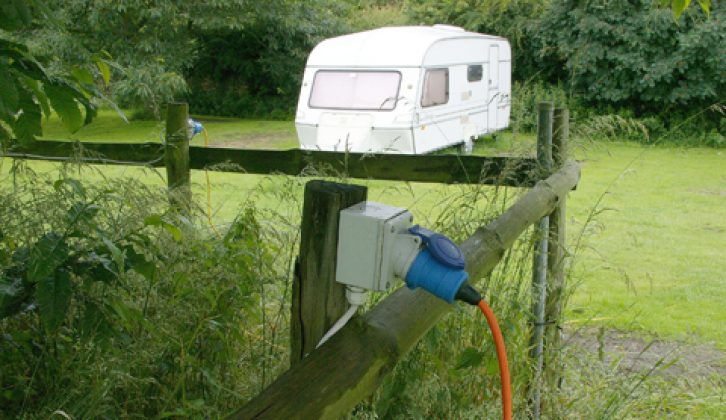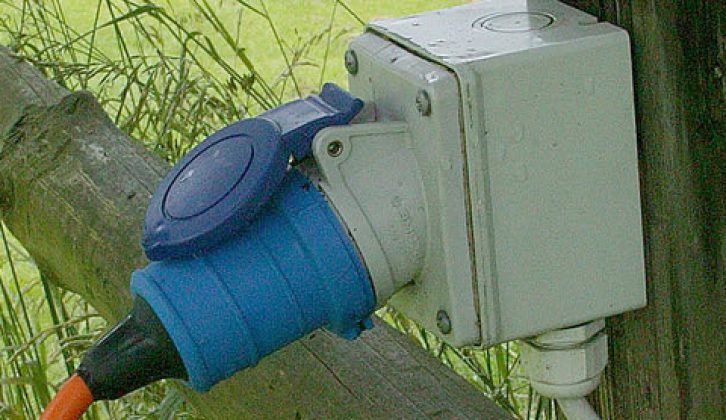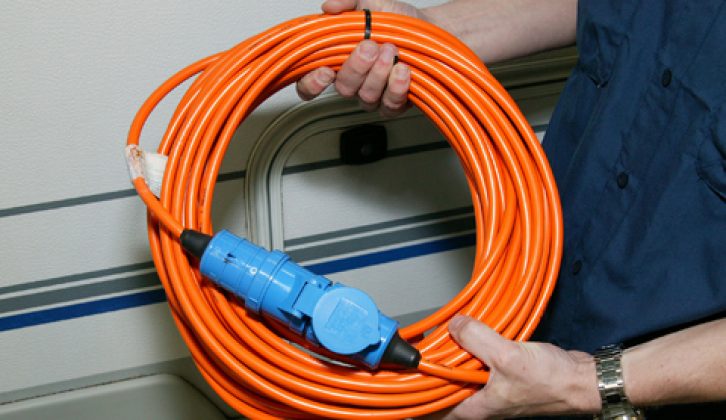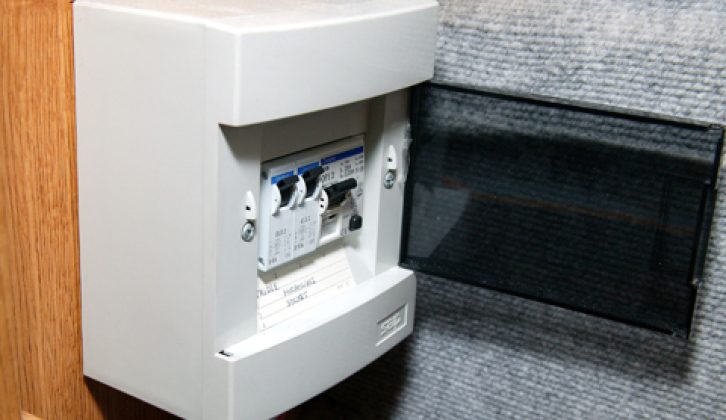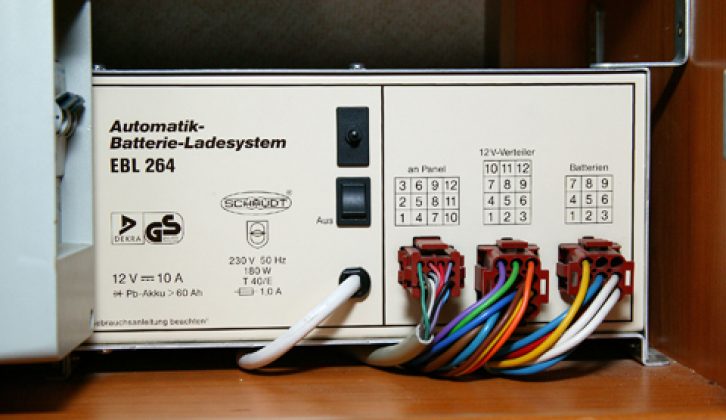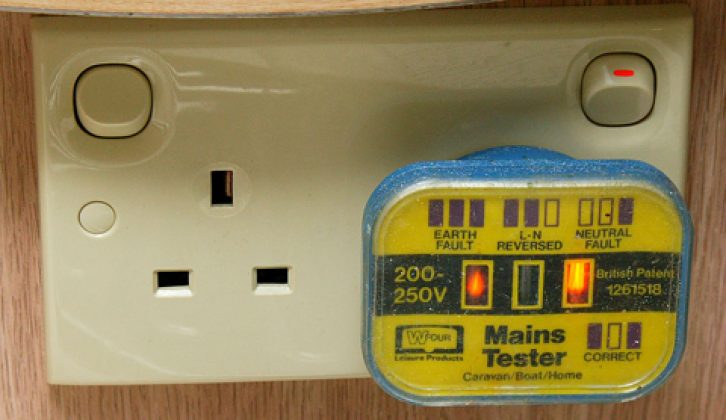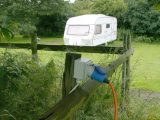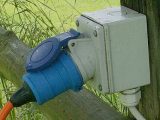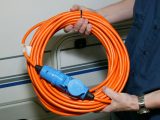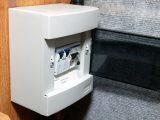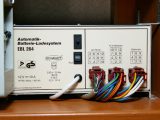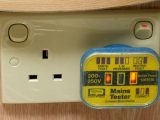Our troubleshooting feature explains common mains hook-up maladies and how to avoid them
The ‘hook-up’ system, of connecting your ’van to mains electricity, is surprisingly simple and reliable. Essentially, it consists of a hook-up post (or socket) by the on-site pitch, a socket in the side of your ’van, and a [tl:gallery index=1 size=215×129]lead to join them together. These days, for added protection, most modern ’vans route the incoming mains through their own RCD and MCB circuit breakers. Additionally, on many campsites, the supply is also routed through the site’s RCD and MCB breakers before it gets to the hook-up socket – these lend added protection to your vehicle’s circuits, as well as the hook-up lead itself.
MCBs and RCDs
MCB stands for ‘miniature circuit breaker’ and, in essence, is a modern-day replacement for fuses. Just like a fuse, MCBs sit in the live feed to prevent excessive electrical current being drawn. However, whereas excess electricity in a fuse makes a fuse wire melt, an MCB switch will trip (i.e. it switches itself off). To make the circuit live again, all you have to do is flick the switch back.[tl:gallery index=3 size=215×129]
On most campsites, the electrical supply’s MCB will be rated to the maximum current (in amps) that the feed can supply. Trying to draw more will trip out the supply.
Although MCBs (and fuses) provide a degree of electrical protection, there are still hazardous circumstances against which MCBs cannot protect. For instance, a faulty appliance or chafed wires in your motorhome’s loom may allow some electricity to leak to earth. Provided that the leak is small, the amount of electricity being drawn through the MCB will be within its limits.
However, the leak could cause heat to build up, with the risk of fire. Worse still, it could make any metallic outer surfaces live, with the risk of electric shock.
RCDs, ‘residual current devices’, guard against such problems by monitoring the earth supply. In a healthy electrical circuit, the earth wire should be electrically dead. So, if any current is detected, the RCD immediately cuts the live and neutral feeds.
Being electro-mechanical devices, RCDs can become unreliable with age. That’s why they’re equipped with a test button, which you should check regularly.
The most common mains hook-up problem
Here, we are talking about overloading. Modern ’vans have several mains sockets in them, which makes it easier than ever to build up more of an electrical demand than the hook-up can supply. For instance, the simultaneous use of a phone charger and TV can easily push the demand too high if you then also switch on a heavy appliance such as a kettle. Even your ‘van’s automatic leisure battery charger can draw an [tl:gallery index=4 size=215×129]samp or two, so it could be worth switching it off when you’re hooked up to a low-amperage supply.
Sites vary though. If you’re unlucky, the supply will be a paltry 4A. Even at the other end of the scale, though, 16A is the maximum and this is only slightly more than you can wring out of a single domestic mains socket.
The best way to avoid a problem is to plan ahead and familiarise yourself with the electrical needs of all the appliances you may use in your motorhome.
Prevent overload: audit your electrical demand
Electrical hook-up points are always rated in amperes, yet appliances’ electrical demands are normally expressed in watts. Fortunately, it’s easy to convert one to the other to calculate all your appliances’ demands in amps: click here to see an easy way to do this. Another couple of units you may see are milliamperes (mA) and kilowatts (KW). Currents of less than 1A are usually expressed in mA. There are 1000mA in 1A so 500mA is actually half an amp. Similarly, a kilowatt is merely 1000 watts.
Once you know the amperage needs of all the devices you’re likely to run in your ’van, total up any you plan to use simultaneously to make sure the demand is within the hook-up’s maximum supply rating. However, also bear in mind that many devices demand a higher current for a split second when they start up.
Motors such as those in fan heaters need a starting surge of nearly twice their usual current, while fluorescent lights use four or five times their usual current rating. Problems can be avoided by switching on the highest surging product(s) first, while the current draw is still low.
Hooking up safely
When connecting to a hook-up, bear in mind the following:
• Some Continental countries use old-fashioned connectors, but adapters are available and should be bought before you go
• On basic sites, mains hook-up can be just a three-pin domestic socket in a barn. Never use a domestic extension lead outside – invest in an adapter that allows the domestic socket to be joined to your hook-up lead
• A 25m lead is essential, because hook up posts are often a long way[tl:gallery index=2 size=215×129] away. Unravel all the cable: if it’s tightly coiled it can overheat. With the increased use of high-amperage appliances in ’vans, it is essential that the hook-up cable is allowed to cool by exposing it to the air
• If you have to join two leads together, make sure that the sockets and plugs are in perfect condition and that the join is raised above the ground
• Plug the lead into your ’van first, and the hook-up socket last. If you plug into the hook-up first, the semi-exposed (other) end will be live
• Hook-up sockets and plugs[tl:gallery index=5 size=215×129] only work when they are pushed fully home.
• Buy a mains tester and use it after hooking up your ’van: it will check for polarity and earth faults.
Tracing faults
If the electrical supply keeps tripping, and you know that the problem is not an overload, here’s how you can pinpoint the fault:
• Unplug the hook-up lead from the supply socket and ask the site manager to reset the power – if it trips, either the supply or the socket is faulty…
• …If it doesn’t trip, turn the power off again, unplug the lead from your ’van, make sure the exposed lead end is in a dry place where nobody will go near it, and switch the power back on. If it trips, the lead is at fault…
• …If not, unplug everything from your motorhome’s sockets and switch off all the circuit breakers. Unplug the lead from the hook-up socket, re-connect it to your ’van, and then to the hook-up point. A trip at this stage indicates a wiring fault in your vehicle’s socket, or between the socket and the circuit breakers – professional assistance is required.
• If the power doesn’t trip, gradually switch on each of your vehicle’s circuits, at the breaker. If none of these cause problems, the fault must lie with any appliances that were plugged in at the time of the electrical trip, so avoid using them until they have been professionally checked.
